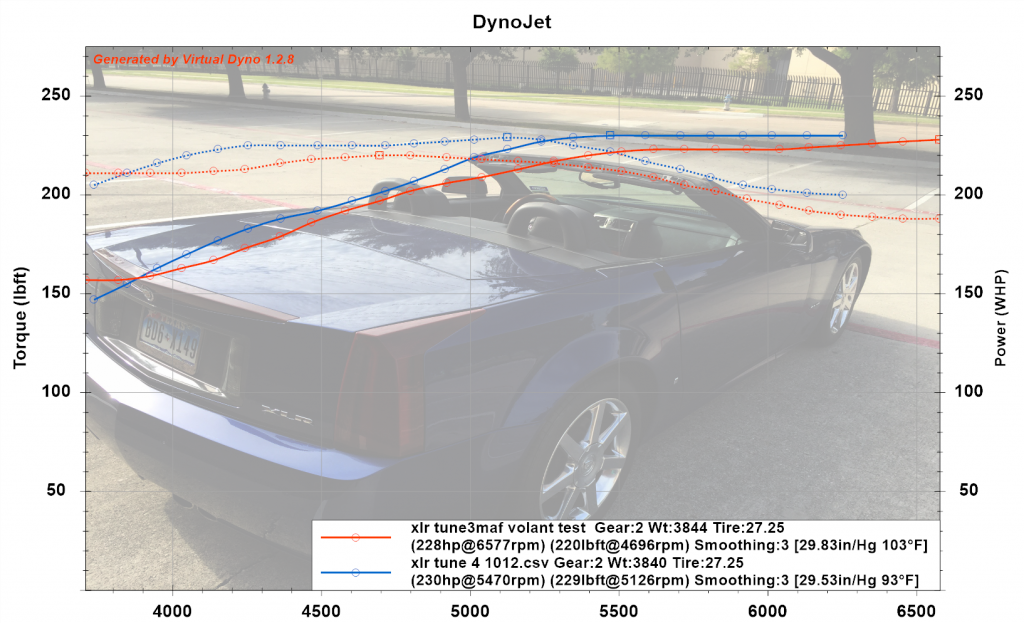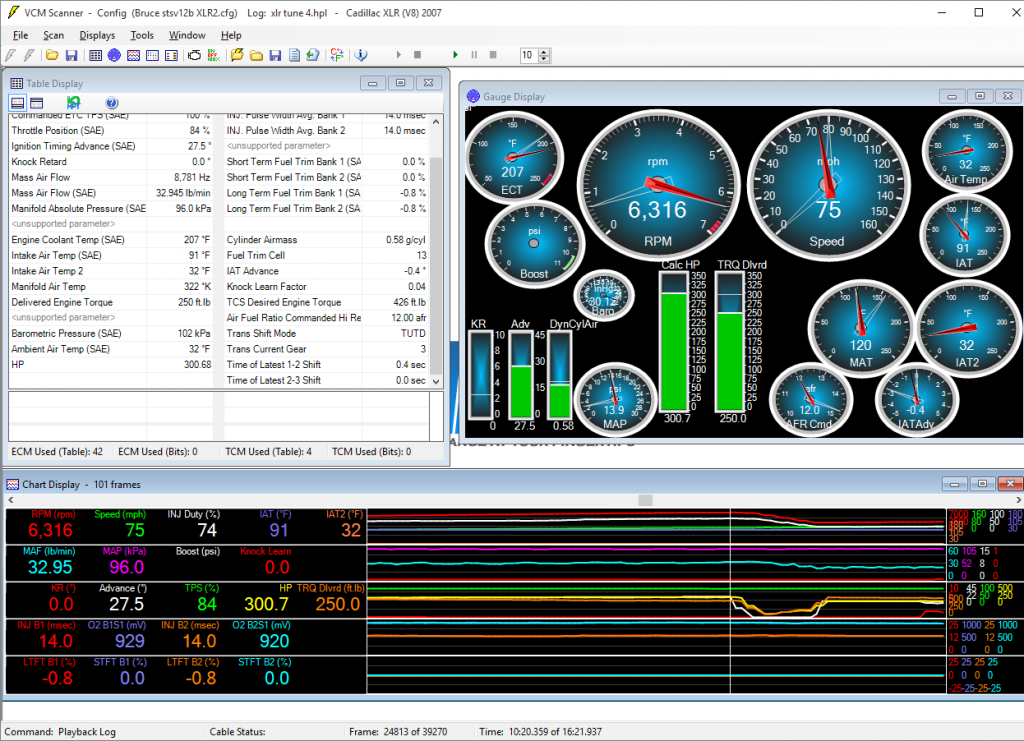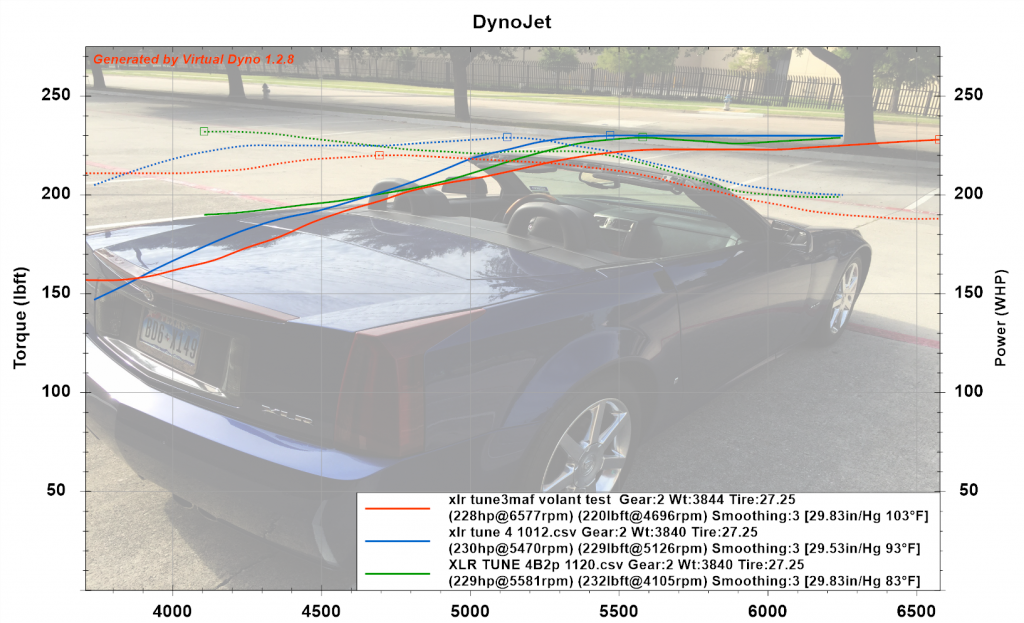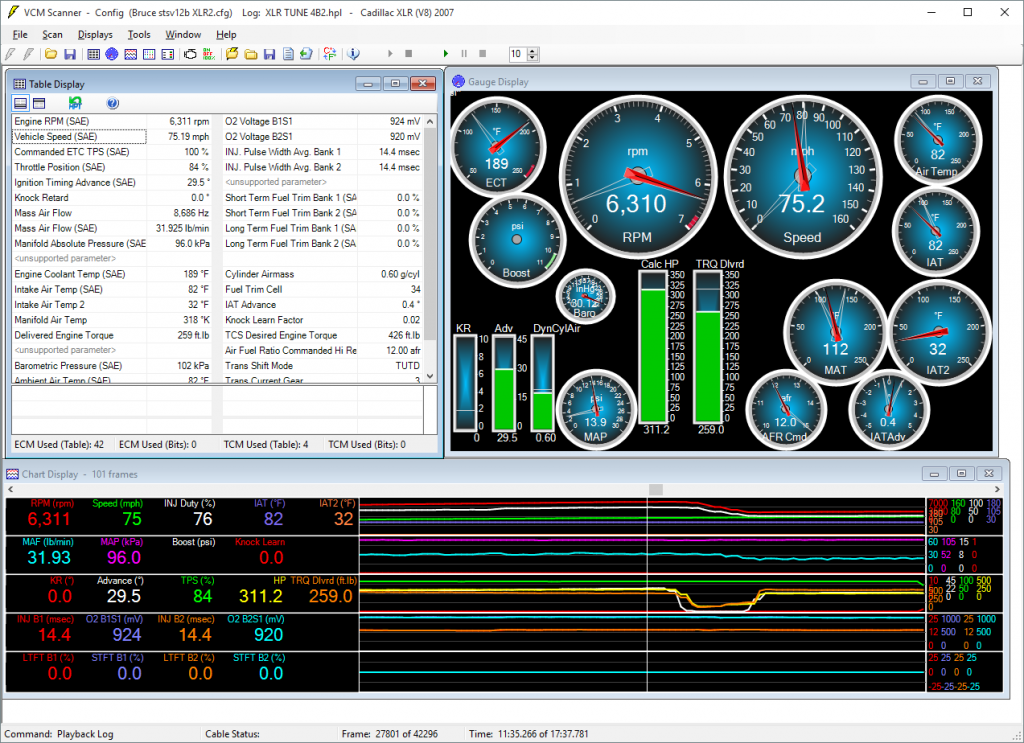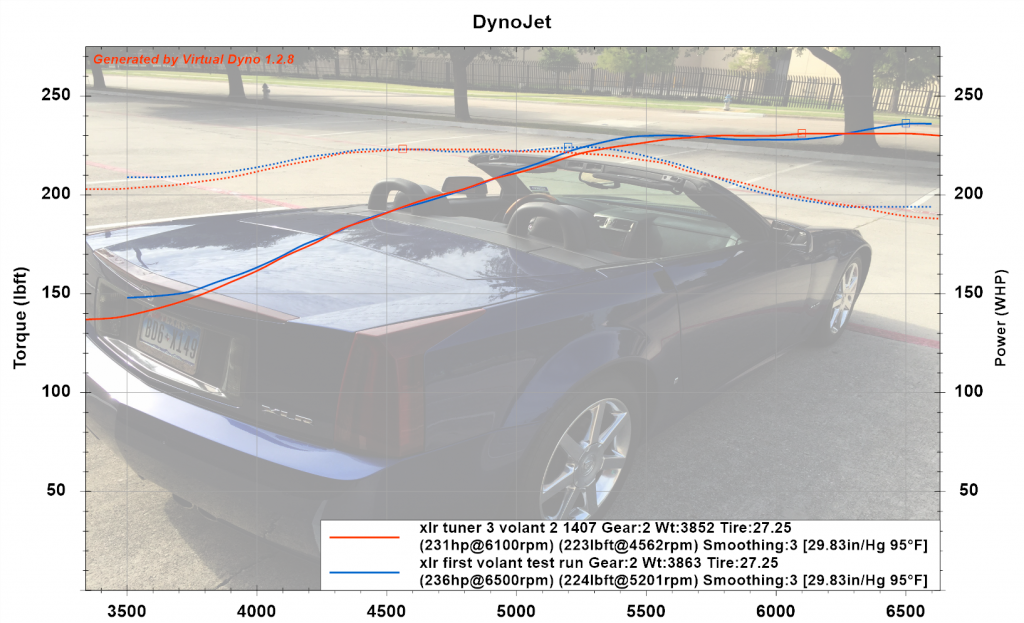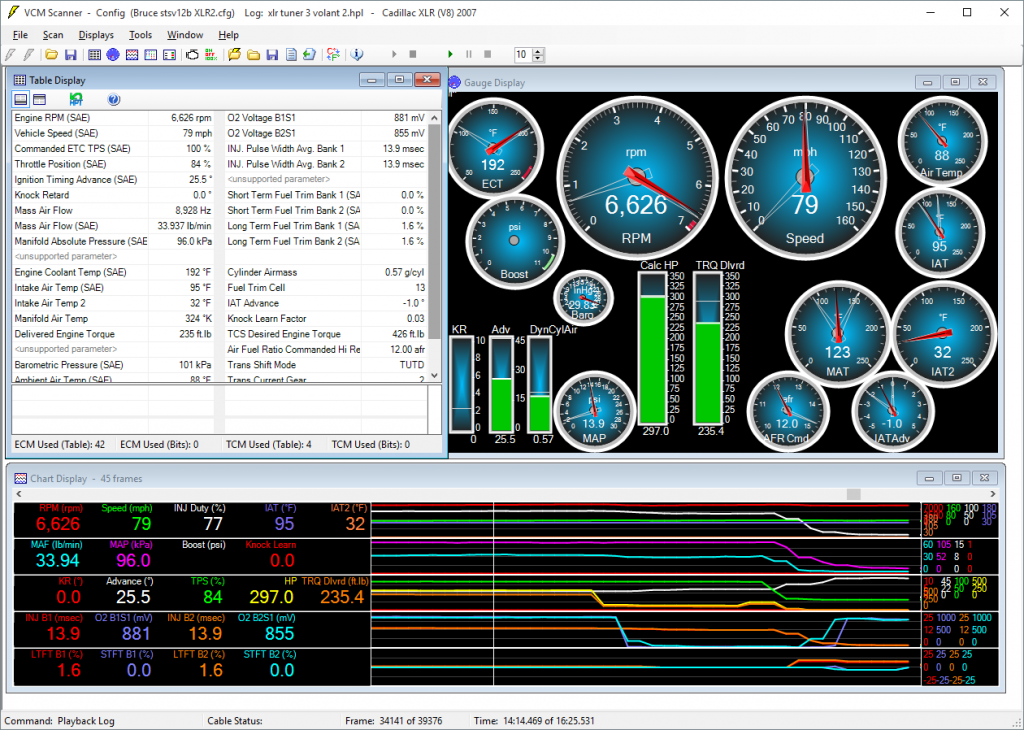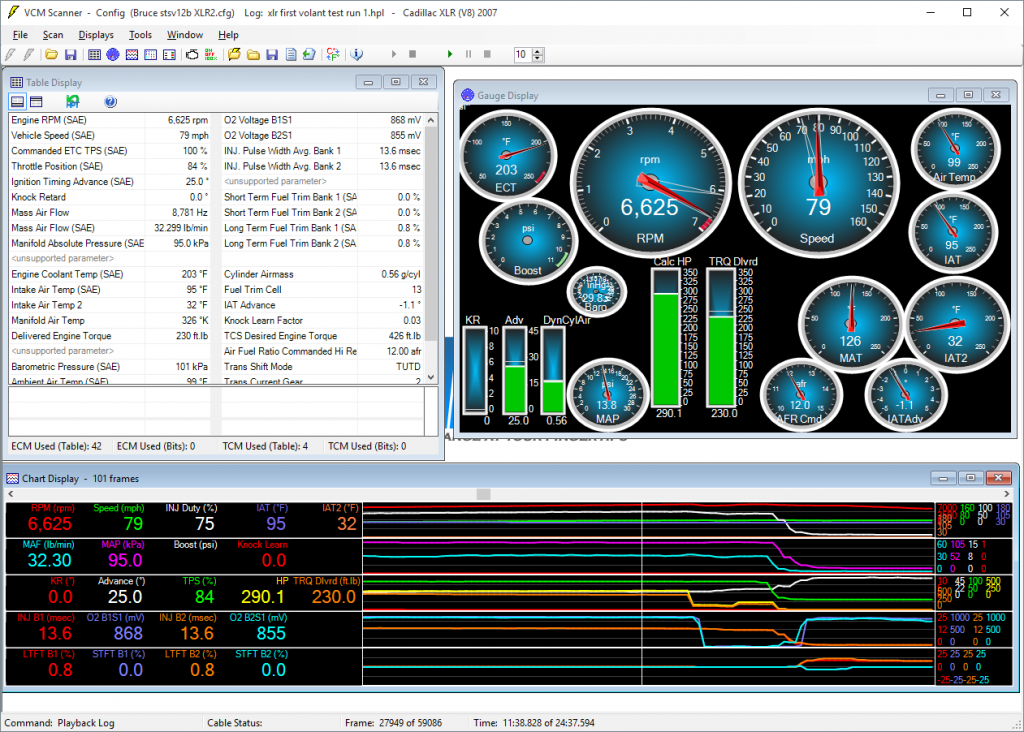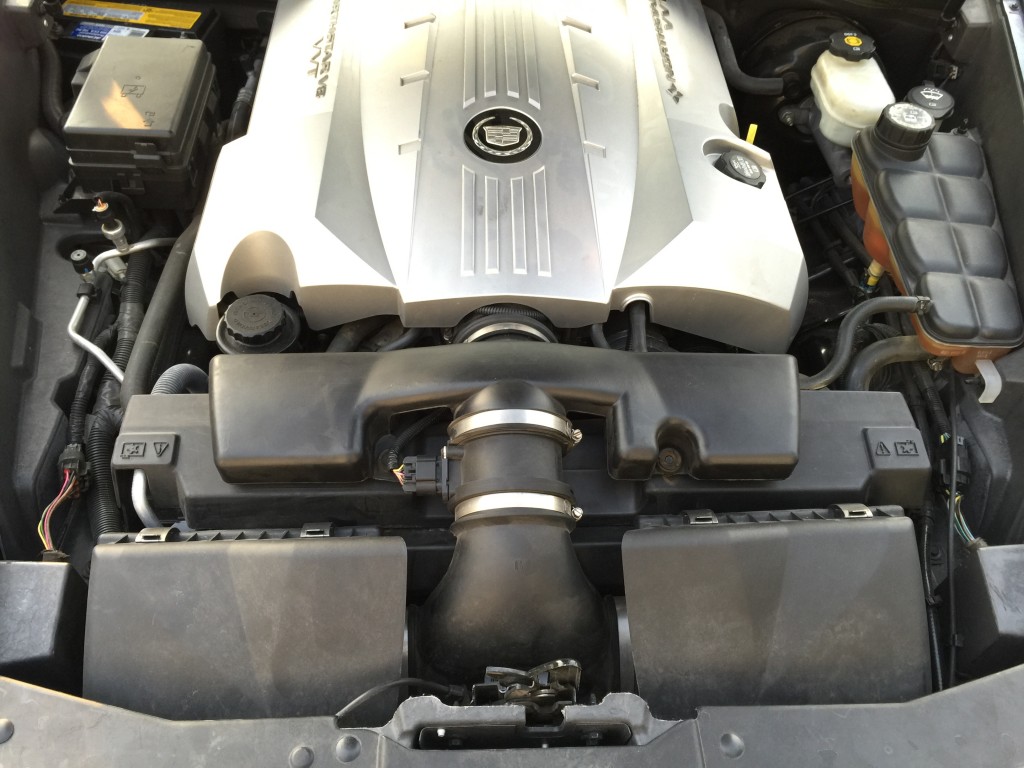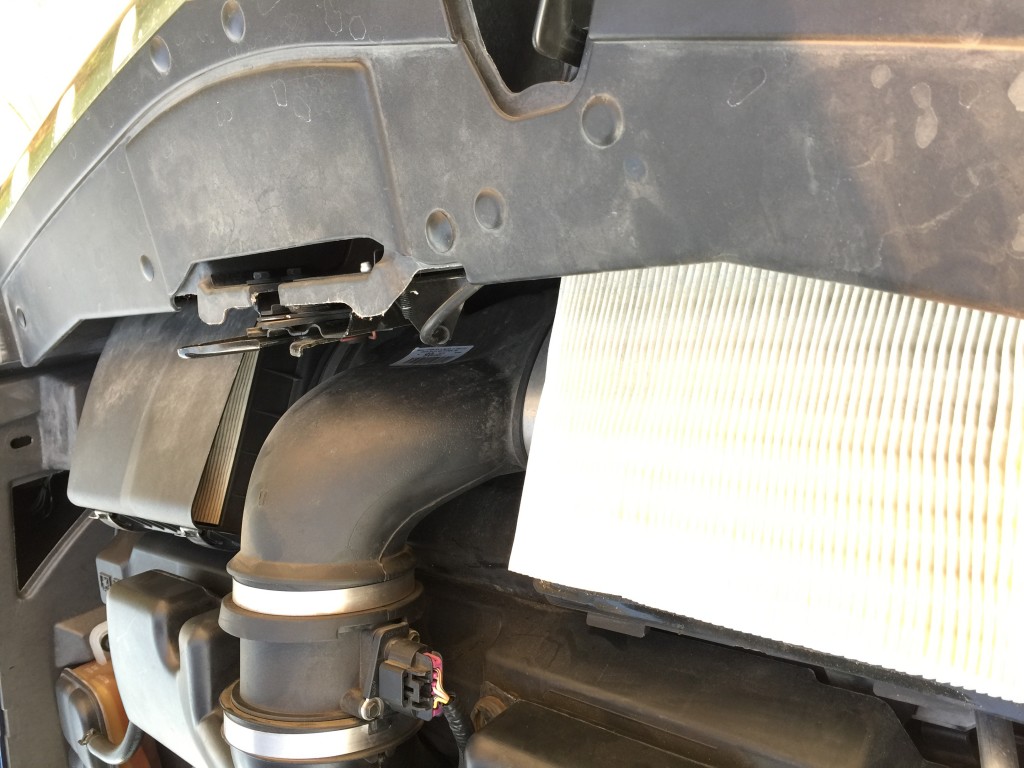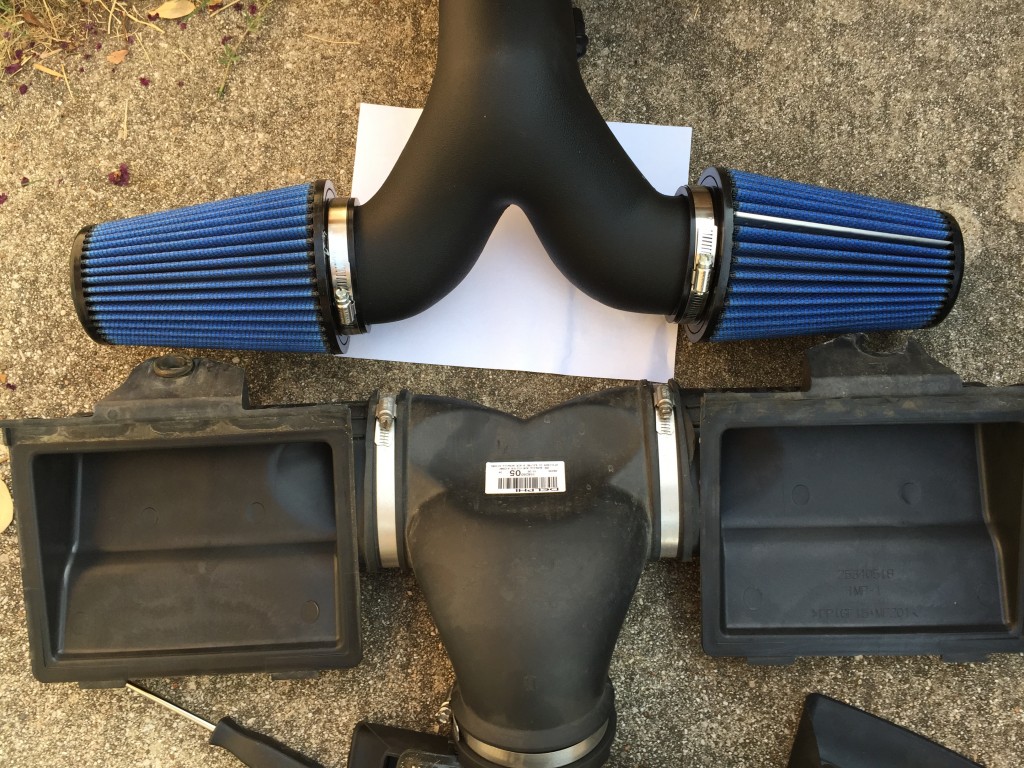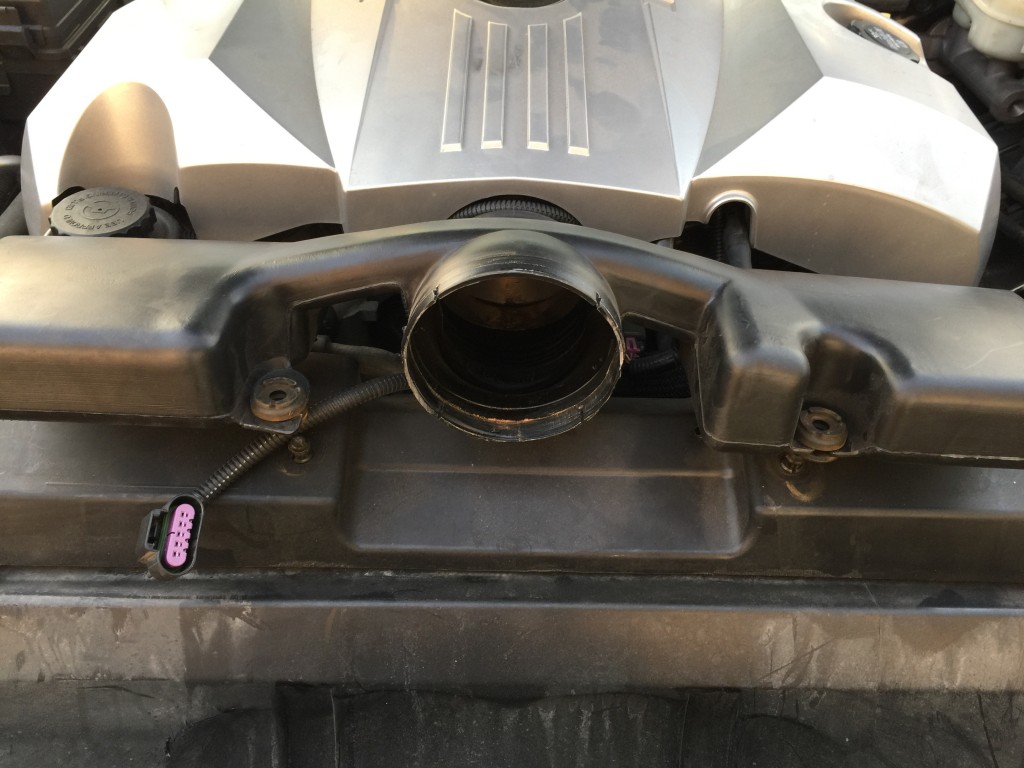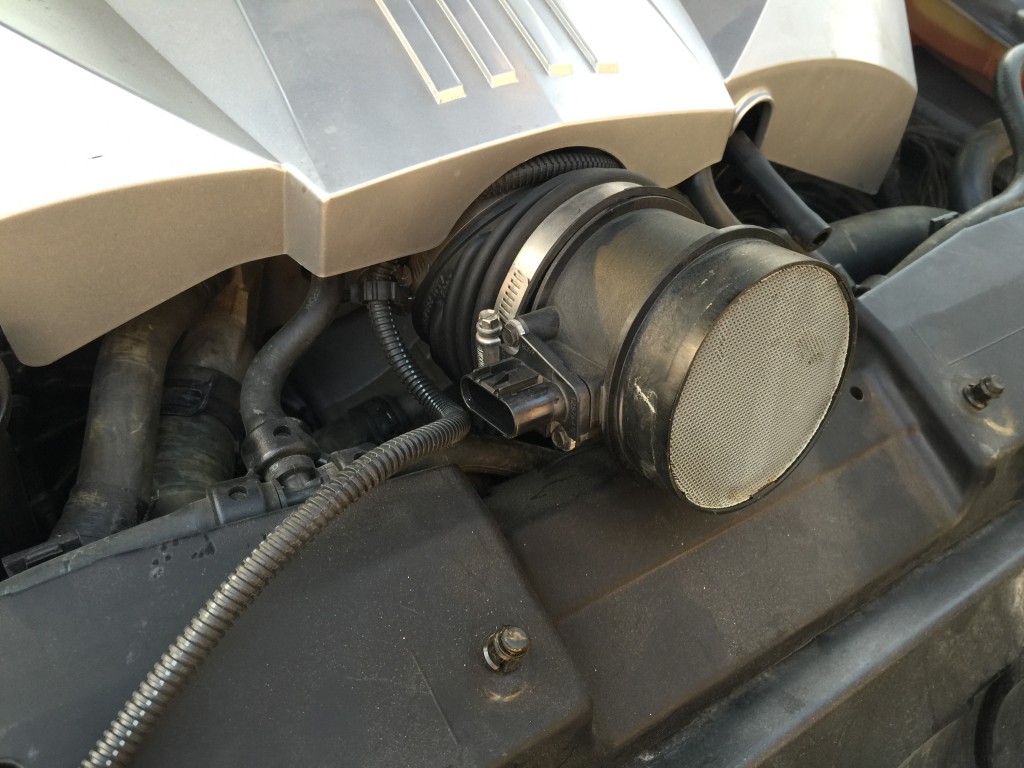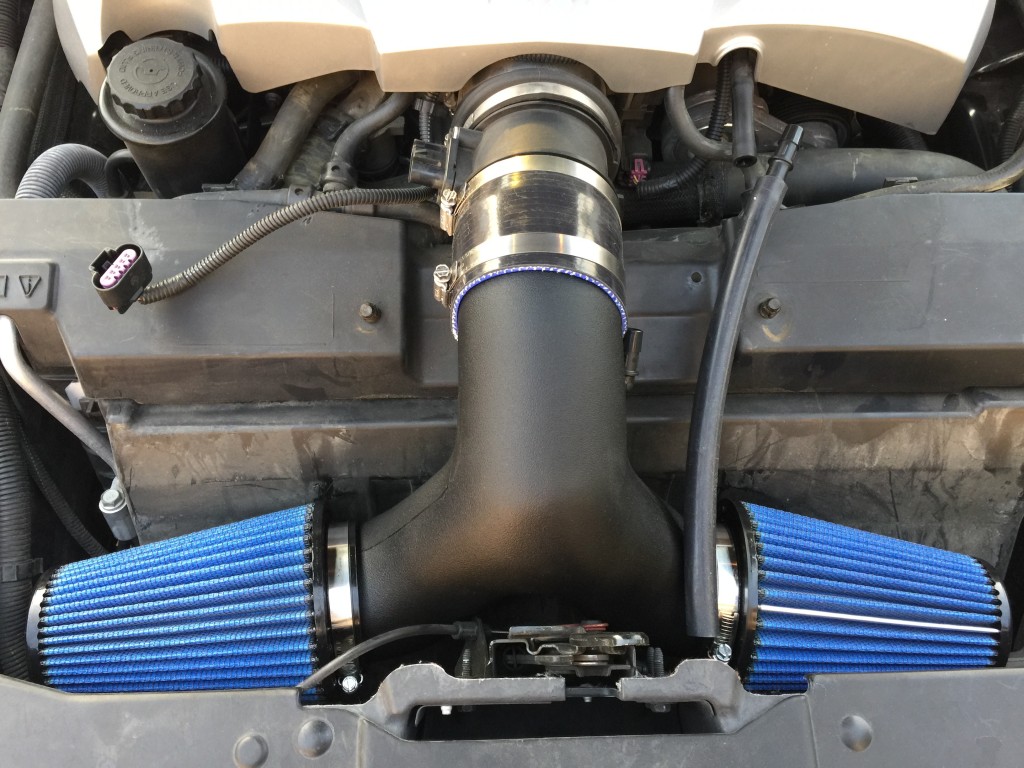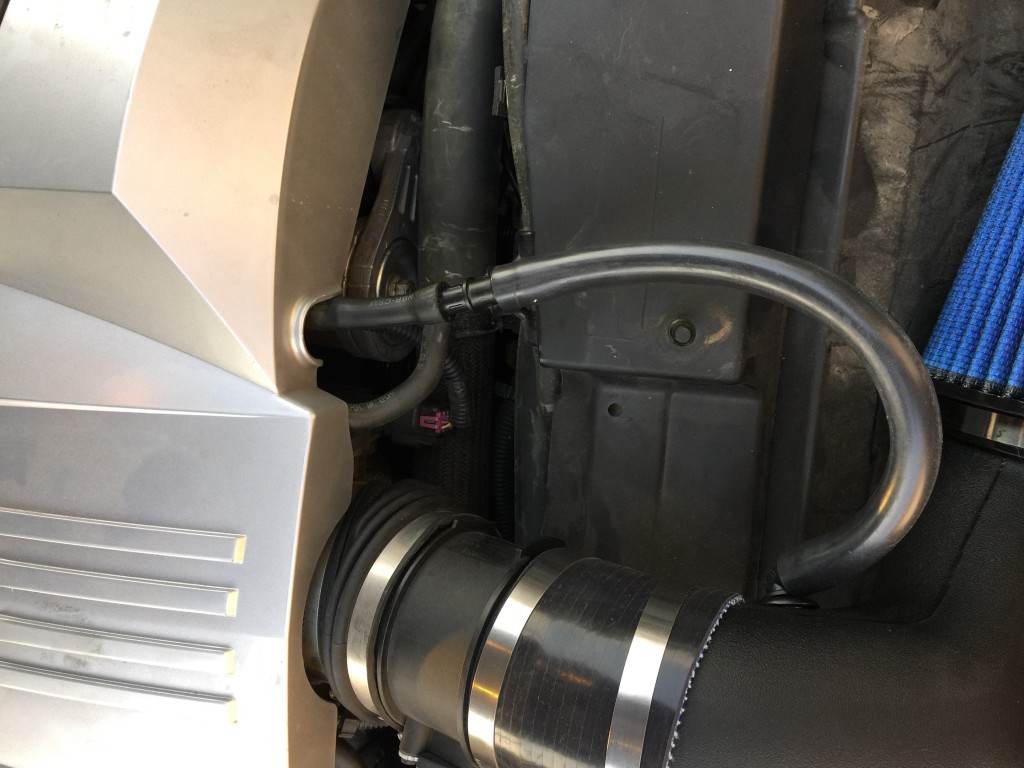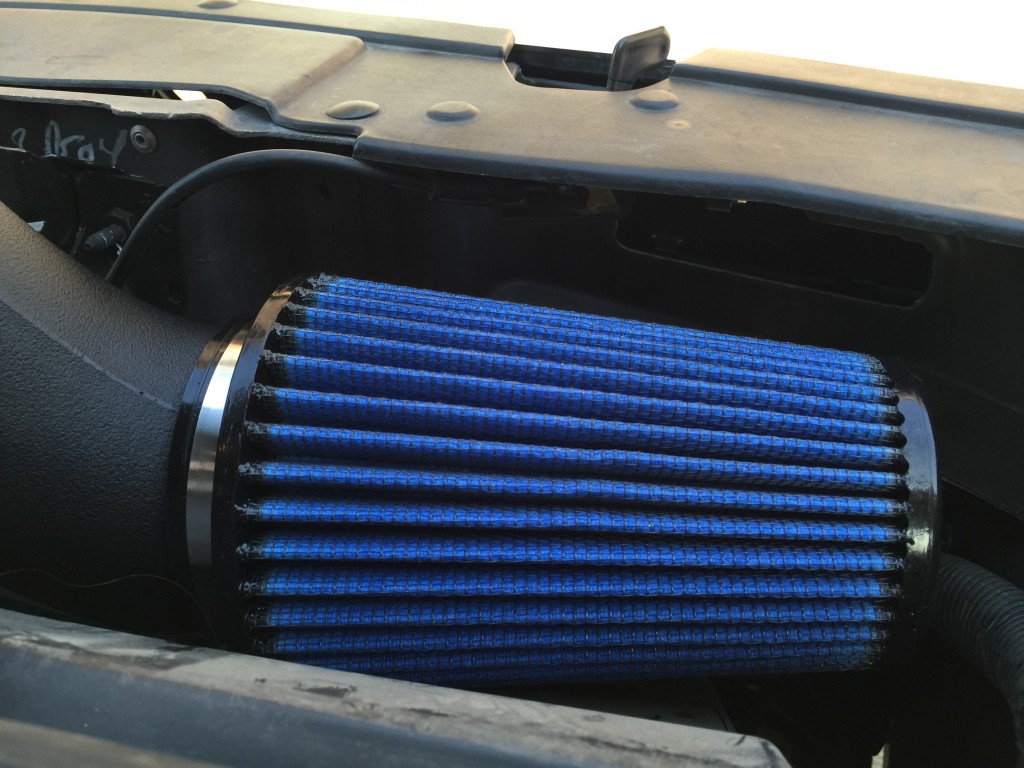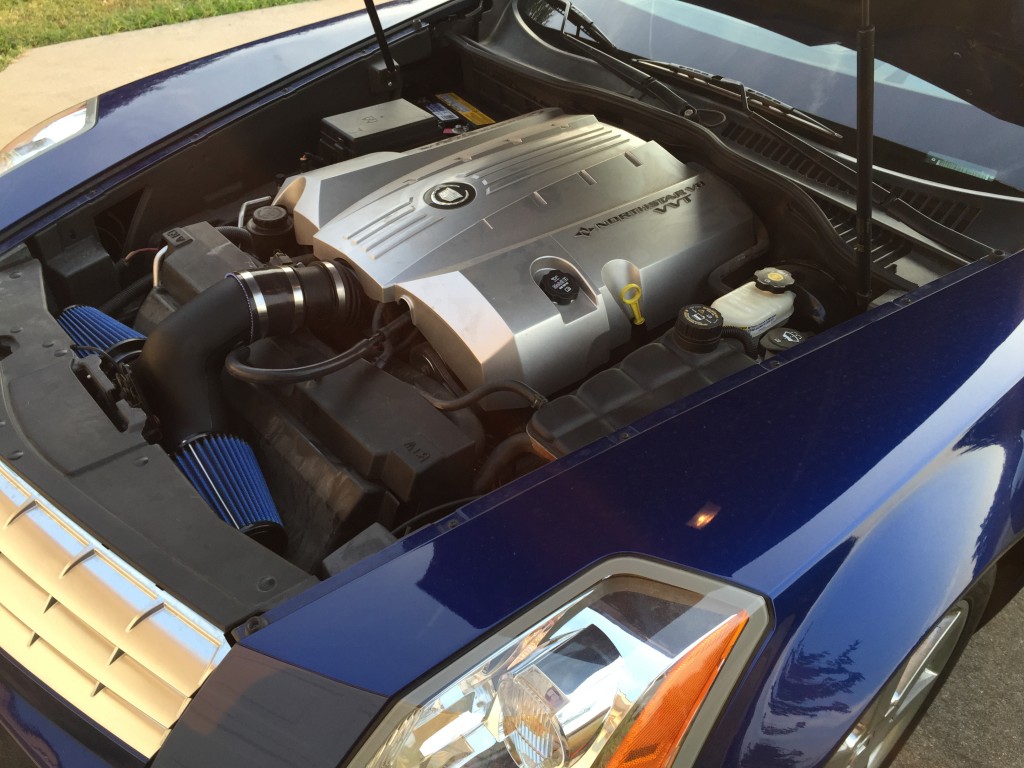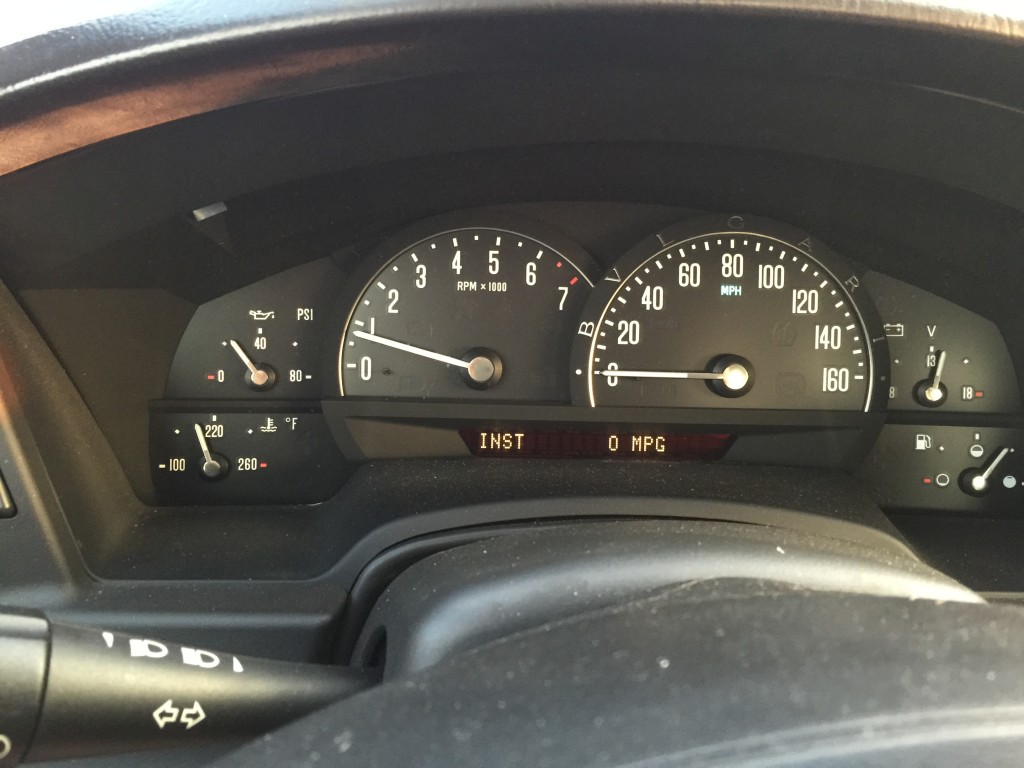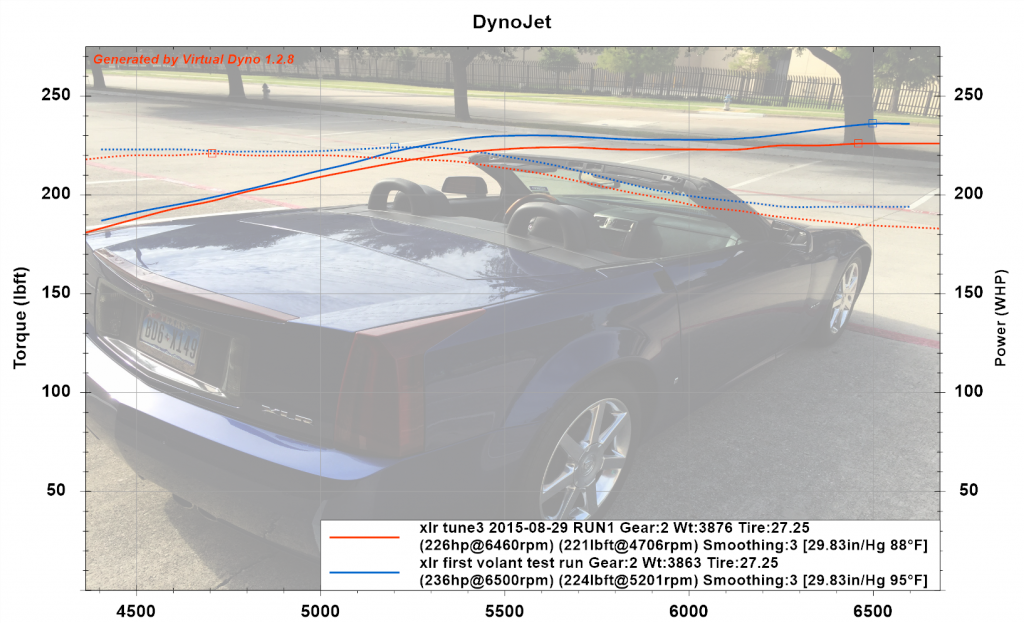There are several things you don’t want to have happen when you are tuning a car:
- Tuning laptop crash
- Communication / connection / gadget problems
- Unintended tune changes
- Changing conditions
I think I saw them all today, but here is what I think I learned.
First, I worked on MAF tuning. With the recent addition of the Volant intake, my long term fuel trims were up 8-12%. The MAF is tuned for the factory intake, so presenting it with a different air flow is not surprising that it would need some instruction. In order to tune the MAF I compared long term fuel trims and short term fuel trims with the MAF signal, and used the fuel trim results to adjust the MAF signal in HPtuners. This calibrates the MAF so that it correctly measures the incoming air with the Volant intake. now my long term fuel trims are closer to +-5%. I will keep collecting more data and trim them in.
That produced the RED line – Tune3MAF+Volant. I was disappointed with this lower HP — the prior baseline runs were 231-236 whp. I was predicting that tuning the MAF would pull the actual AFR (Air fuel ratio) back to commanded, and that the prior runs were slightly too lean for max power. So I expected to see today’s test several whp above prior tests, but that was not the result I got.
Certainly it is hot here, and I had the XLR out all day and in the sun, and that effects the tests, but I am not certain yet why the tuned MAF version was not better.
I started a new Tune4, which takes our 50% of the IAT retard at 212F, and 50% of the ECT retard at 212F. It also turns the engine fans up sooner to try to keep the ECT lower. I like to have the TUTD (touch up touch down) transmission shift itself at redline, so I modified the transmission programming to have it do that.
This transmission programming caused a bit of a testing issue, as the default is not to shift at redline and so my next test didn’t get to 6700 rpm. The blue line in the graph doesn’t rev fully to redline. I have moved the shift up 2 mph further to improve the RPM span for the next update.
The Tune4 line in BLUE also has 2 degrees of advance except where there was some knock retard, and reductions in timing there. The next update will have a few more reductions around knock — basically by reducing the IAT and ECT retards, and increasing the base spark, I am near the knock limit at mid-RPM (4500-5200).
Tune4 looks promising overall. I hope to get a cold/cold test in tomorrow morning early, which may tell more about the ‘range’ of our current baseline. With a bit more touch up this will complete air and fueling, and after more baselines I would like to do some VVT tests.
Update: Next morning cool air test
In this graph the green line is 9/5 AM in cooler air, with XLR not heat soaked. Again, I expected this to be higher than the blue result but it was not. I conclude from this that heat effect is not what is causing the lower than expected result.
Hptuners scan at calculated hp peak. Note IAT is at ambient, and MAT is all the way down at 112F, with ECT at 189F.
UPDATE after Tune 6D:
I have re-visited all of my tune logs, and I suspect that the adjustments to the MAF were good outside of WOT, but not in the WOT range. I have extrapolated from the pre-WOT range to correct the WOT range of frequencies. This would have effected everything from Tune 4 (right after Volant install) to now.

